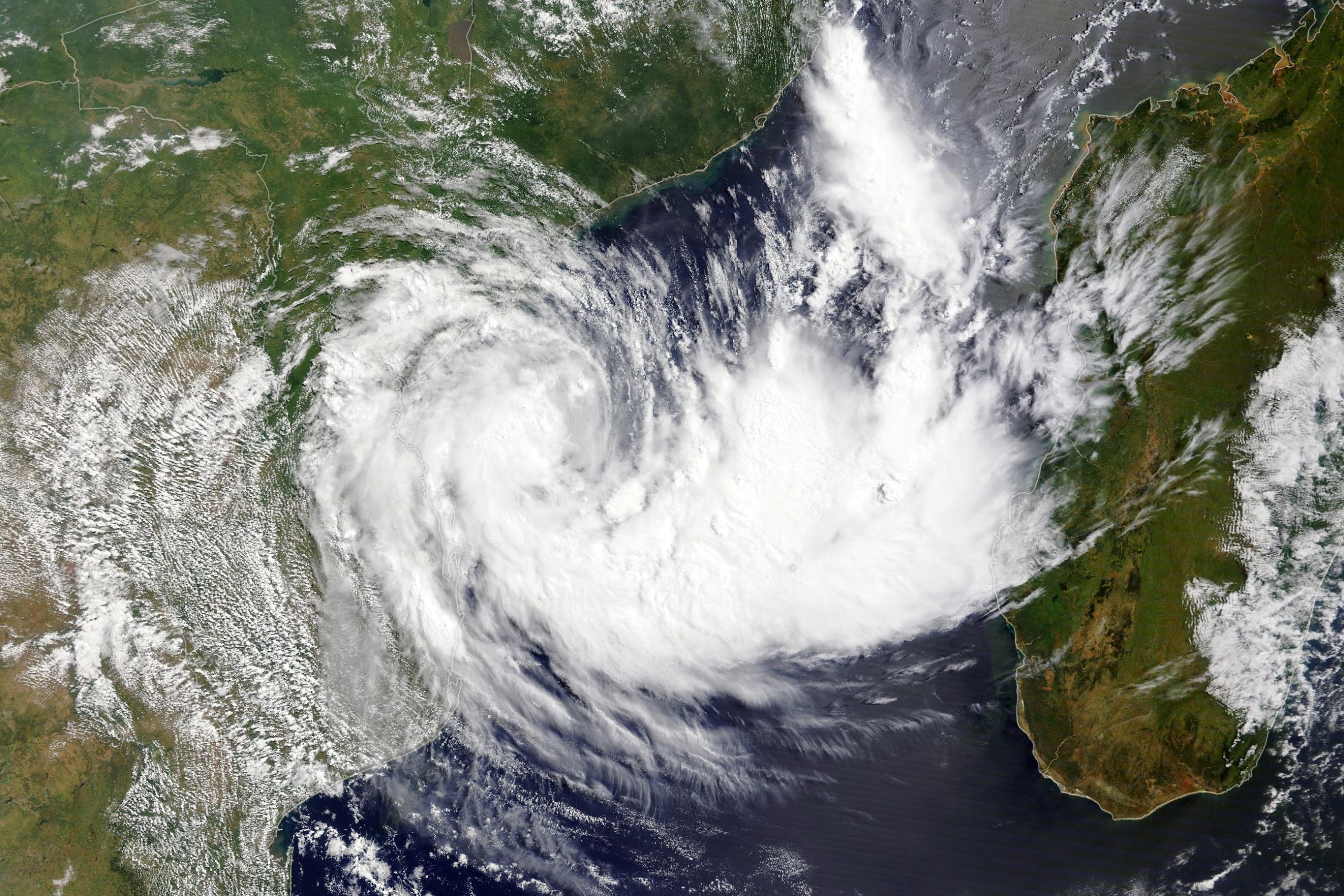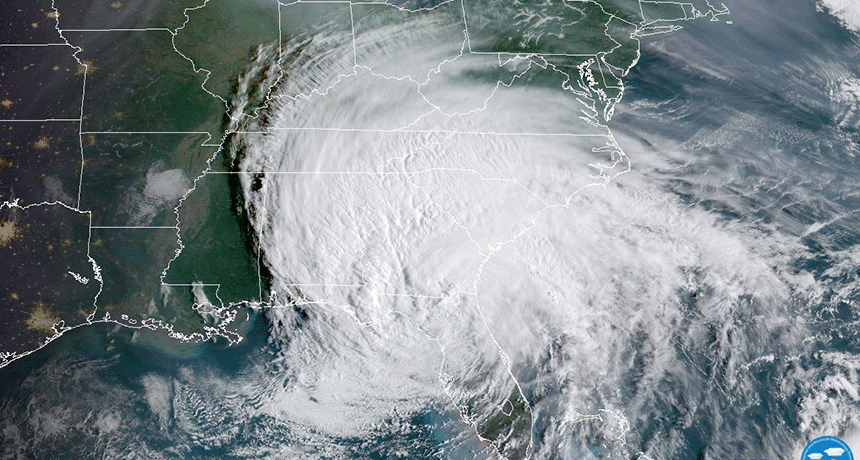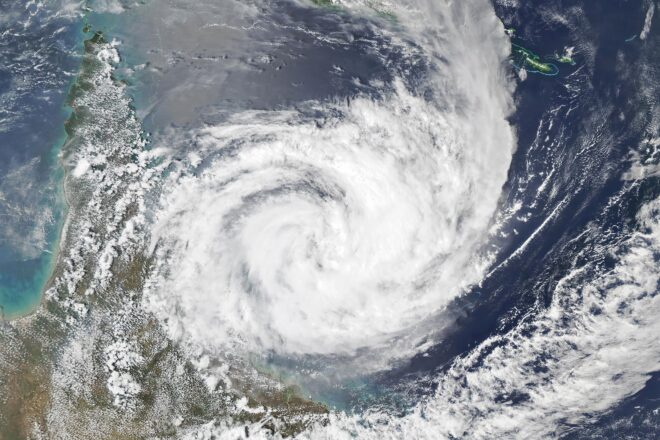What is a Tropical Depression : Unveiling the Hidden Fury
A tropical depression is a weather system with rotating winds up to 39 mph. It can intensify into a tropical storm.
Tropical depressions originate over warm ocean waters, where air rises and cools, forming clouds and thunderstorms. As the system gains organization, its winds increase in speed, potentially evolving into a tropical storm or hurricane. Understanding the development of tropical depressions is crucial for meteorologists to forecast potential impacts and issue early warnings to keep coastal communities safe from severe weather events.
Monitoring changes in atmospheric conditions and ocean temperatures is essential in tracking and predicting the formation and progression of these weather systems.

Credit: scitechdaily.com
Formation
Tropical depressions are low-pressure systems that form over warm ocean waters.
Formation occurs when atmospheric conditions are favorable for convection and thunderstorm development.
| Atmospheric Conditions | Low wind shear and high humidity are key factors in tropical depression formation. |
| Role of Warm Ocean Waters | The warmth from the ocean fuels the system, providing energy for the depression to intensify. |
Characteristics
A tropical depression is a weather system characterized by low pressure and organized thunderstorms. It typically forms over warm ocean waters, with sustained wind speeds below 39 mph. The wind speed and direction are important factors in identifying a tropical depression as they help to classify the system. The winds in a tropical depression are generally weak and can change direction rapidly. As a result, the system may move and intensify over time. Another characteristic of tropical depressions is heavy rainfall, which can lead to flooding in affected areas. The system often brings widespread showers and thunderstorms, resulting in significant precipitation. This excess rainfall can cause rivers and lakes to overflow, leading to dangerous flooding conditions. Therefore, understanding the wind speed and direction, as well as the potential for heavy rainfall and flooding, is crucial in predicting and preparing for the impacts of a tropical depression.
Distinguishing From Other Weather Systems
A tropical depression can be distinguished from other weather systems such as tropical storms and hurricanes. While tropical storm winds range from 39 to 73 mph, a tropical depression is characterized by weaker winds ranging from 25 to 38 mph. This difference in wind speed is one of the key factors used to differentiate between the two systems.
Another important distinction lies in the structure and formation of tropical depressions compared to hurricanes. Tropical depressions originate from clusters of thunderstorms over warm ocean waters, characterized by their low-pressure centers. In contrast, hurricanes form when tropical depressions intensify, developing a closed circulation with higher wind speeds.
Tropical depressions and tropical storms are closely related, but they have distinct characteristics. While both are categorized as tropical cyclones, the main difference lies in the wind speed. Tropical storms have stronger winds than tropical depressions, making them potentially more dangerous and destructive.
Tropical depressions are also different from hurricanes. A hurricane is the most intense tropical weather system, with sustained wind speeds exceeding 74 mph. In contrast, tropical depressions have weaker winds and lack the well-defined eye and eyewall structure that hurricanes possess.

Credit: 943thepoint.com
Impact
Tropical depressions can lead to significant impacts on coastal areas and cause flooding. They can also disrupt transportation and pose risks to human lives. In addition, tropical depressions can damage crops and infrastructure. Coastal communities are particularly vulnerable to the effects of tropical depressions. These storms can bring heavy rainfall and strong winds which can result in landslides and mudslides. Farmers may suffer crop losses due to the excessive rainfall and waterlogging caused by tropical depressions. The travel industry is also affected as road closures and flight cancellations become common during these storms. Homes and buildings near the coast may experience structural damage due to the strong winds and storm surges associated with tropical depressions.
Forecasting And Monitoring
A tropical depression is a low-pressure system that forms over warm ocean waters and has the potential to develop into a tropical storm or hurricane. Forecasting and monitoring tropical depressions is crucial in order to provide early warning and minimize the impact of these weather phenomena.
Predictive technologies play a key role in tracking and analyzing tropical depressions. Meteorological agencies use advanced tools and models to gather data about atmospheric conditions, sea surface temperatures, and wind patterns. This data is then used to generate forecasts and projections, helping to predict the formation and movement of tropical depressions.
The role of meteorological agencies in monitoring tropical depressions cannot be understated. These agencies have the responsibility of issuing advisories and warnings to areas at risk, ensuring that communities have enough time to prepare and take necessary precautions. Their expertise in interpreting weather data and communicating it to the public is crucial in promoting safety and resilience.
By continuously monitoring and forecasting tropical depressions, meteorological agencies contribute to mitigating the potential risks and impacts associated with these weather events, ultimately protecting lives and livelihoods.
Mitigation And Preparedness
Mitigation and preparedness are essential in dealing with the impacts of a tropical depression. Understanding its characteristics and taking precautionary measures can help minimize the risks associated with this weather phenomenon. Stay informed and be ready to take necessary actions when a tropical depression approaches.
| Emergency Planning |
| Community awareness is crucial, educating people on understanding risks. |
| Prepare emergency plans, including evacuation routes and shelter locations. |
| Stay informed through reliable sources, adhere to warnings and advisories. |
| Have emergency supplies like non-perishable food, water, and first aid kits. |

Credit: www.snexplores.org
Frequently Asked Questions On What Is A Tropical Depression
What Is Tropical Depression?
A tropical depression is a low-pressure system with organized thunderstorms. It has wind speeds up to 38 mph.
Is A Tropical Depression Worse Than A Hurricane?
A tropical depression is not necessarily worse than a hurricane. They are different in terms of wind speeds, impact, and potential damage. While a hurricane can be more destructive and devastating, a tropical depression can still bring heavy rainfall and flooding.
Is Tropical Depression The Weakest?
Yes, tropical depression is the weakest form of a tropical cyclone. It has maximum sustained winds below 39 mph.
Can A Tropical Depression Become A Typhoon?
Yes, a tropical depression can intensify into a typhoon as it gains strength over warm ocean waters.
Conclusion
Understanding tropical depression helps better prepare for weather disruptions. Keep monitoring forecasts. Stay safe during storms. It’s essential to follow official advice. Knowledge empowers us to respond effectively. Stay informed, stay safe!
